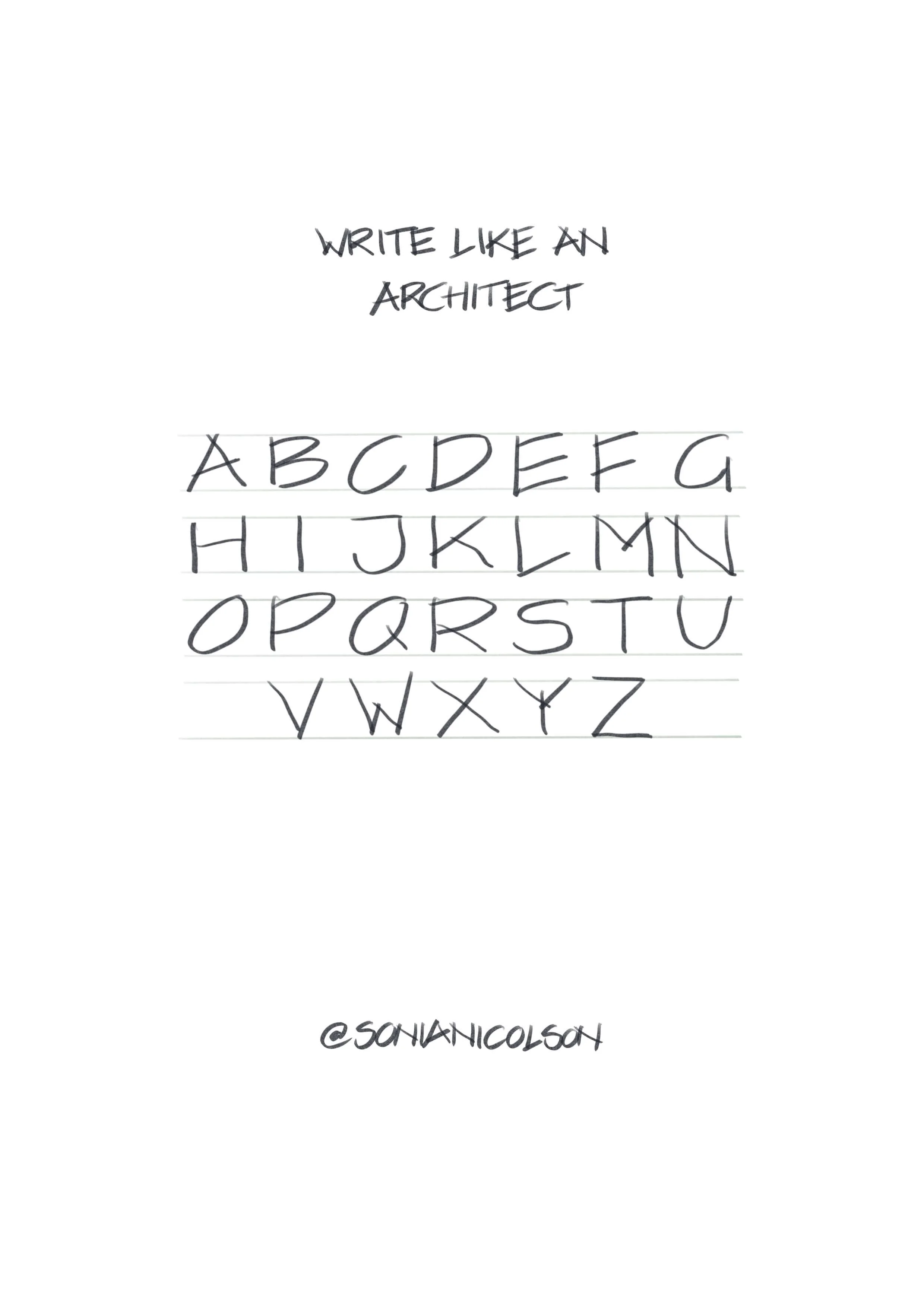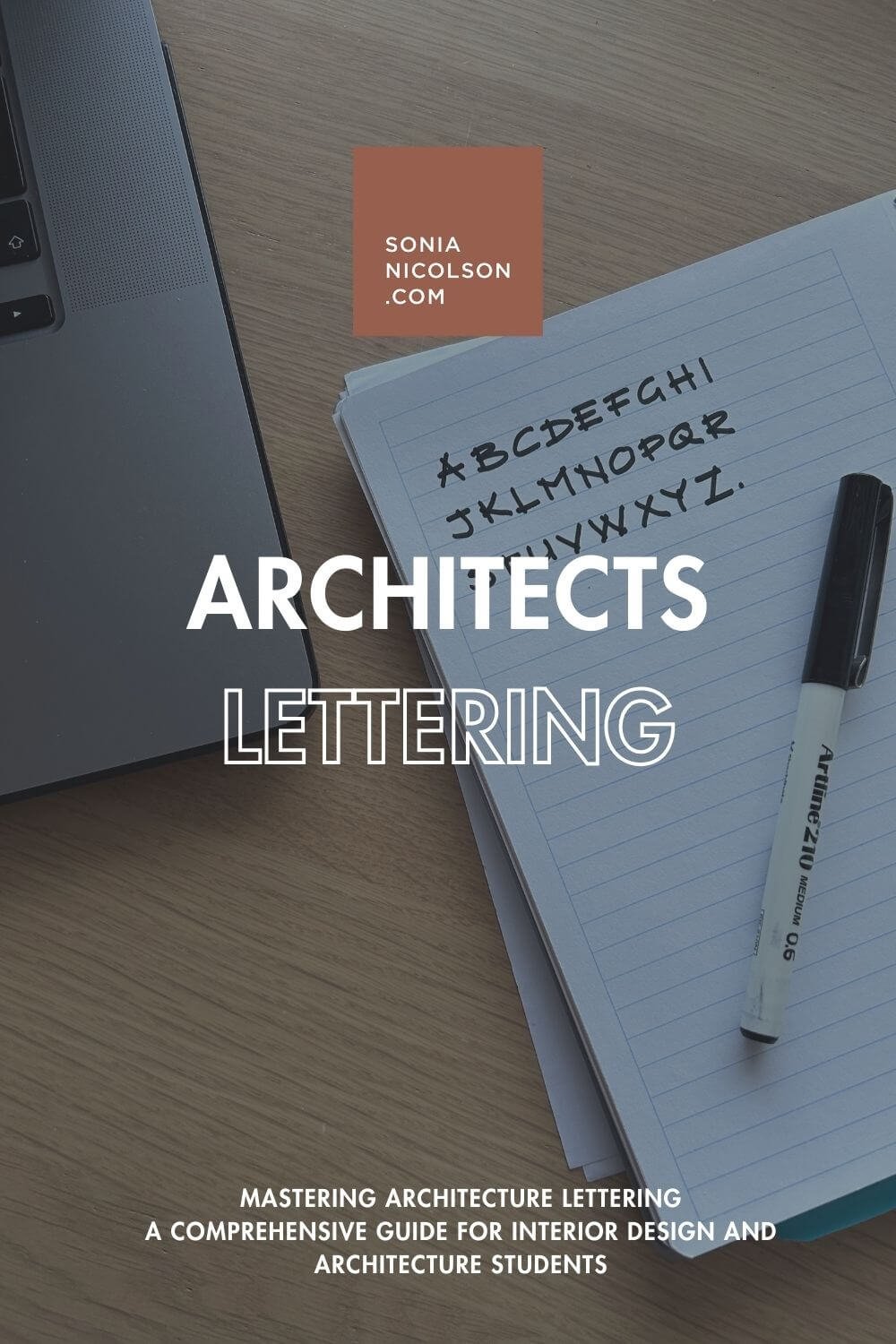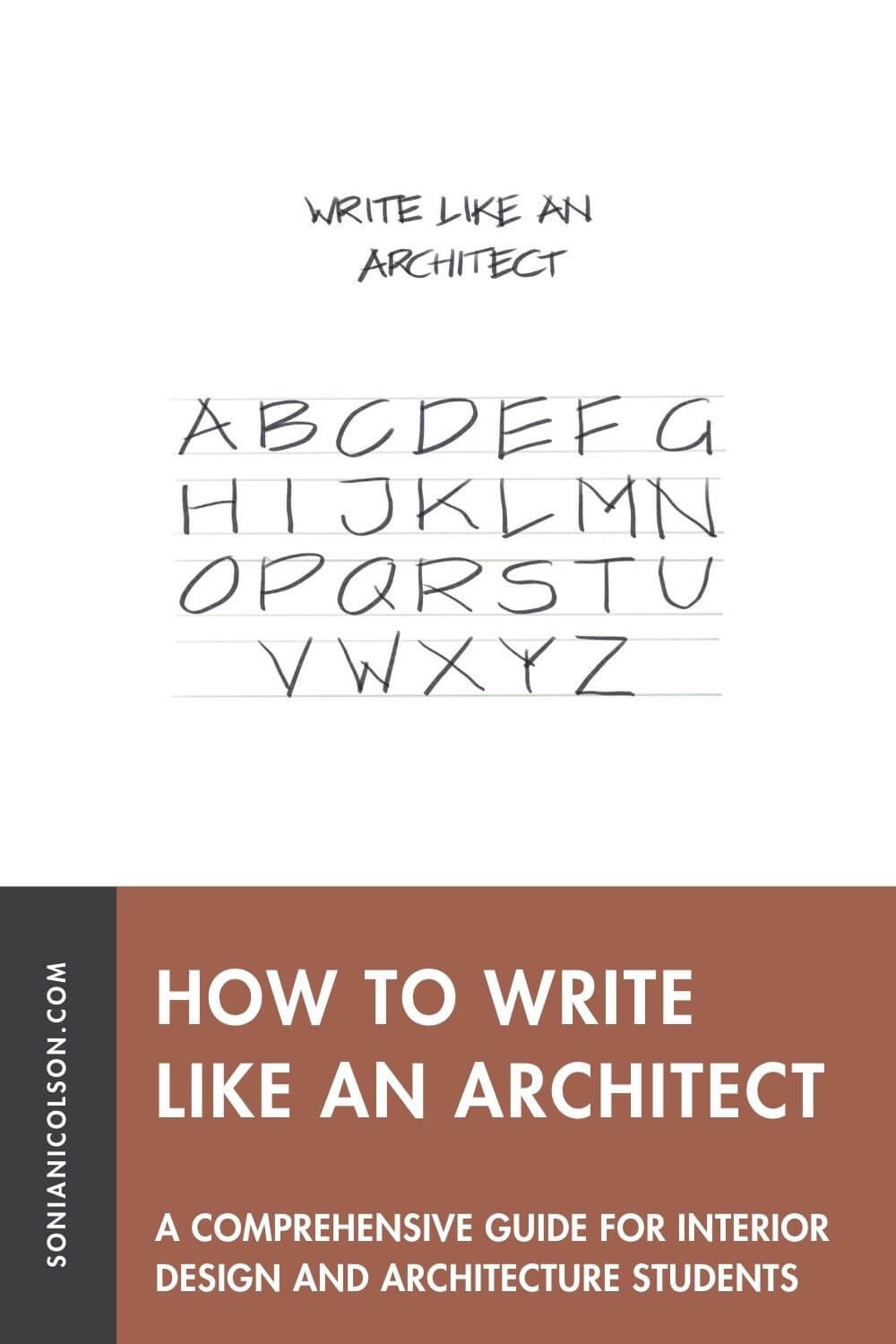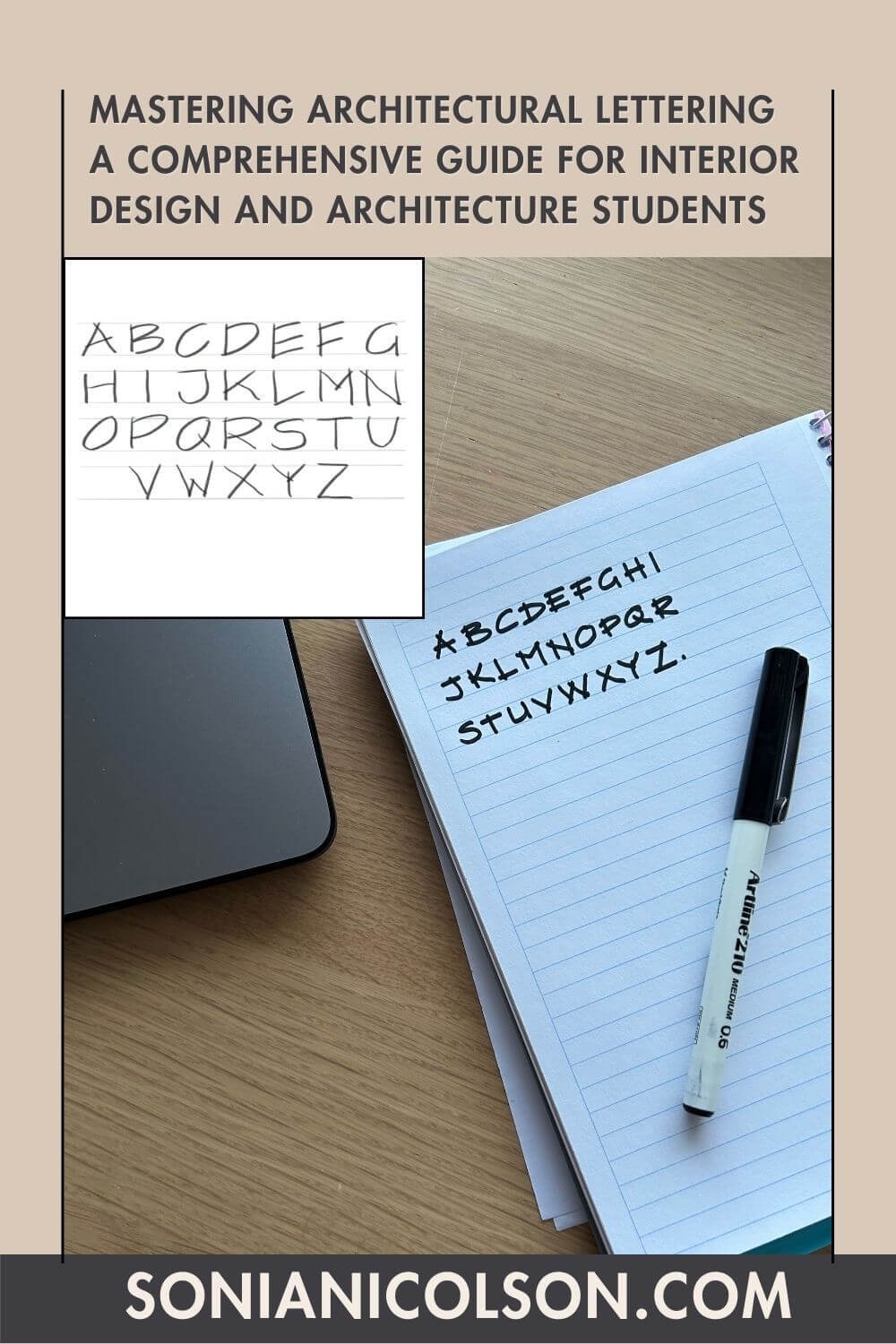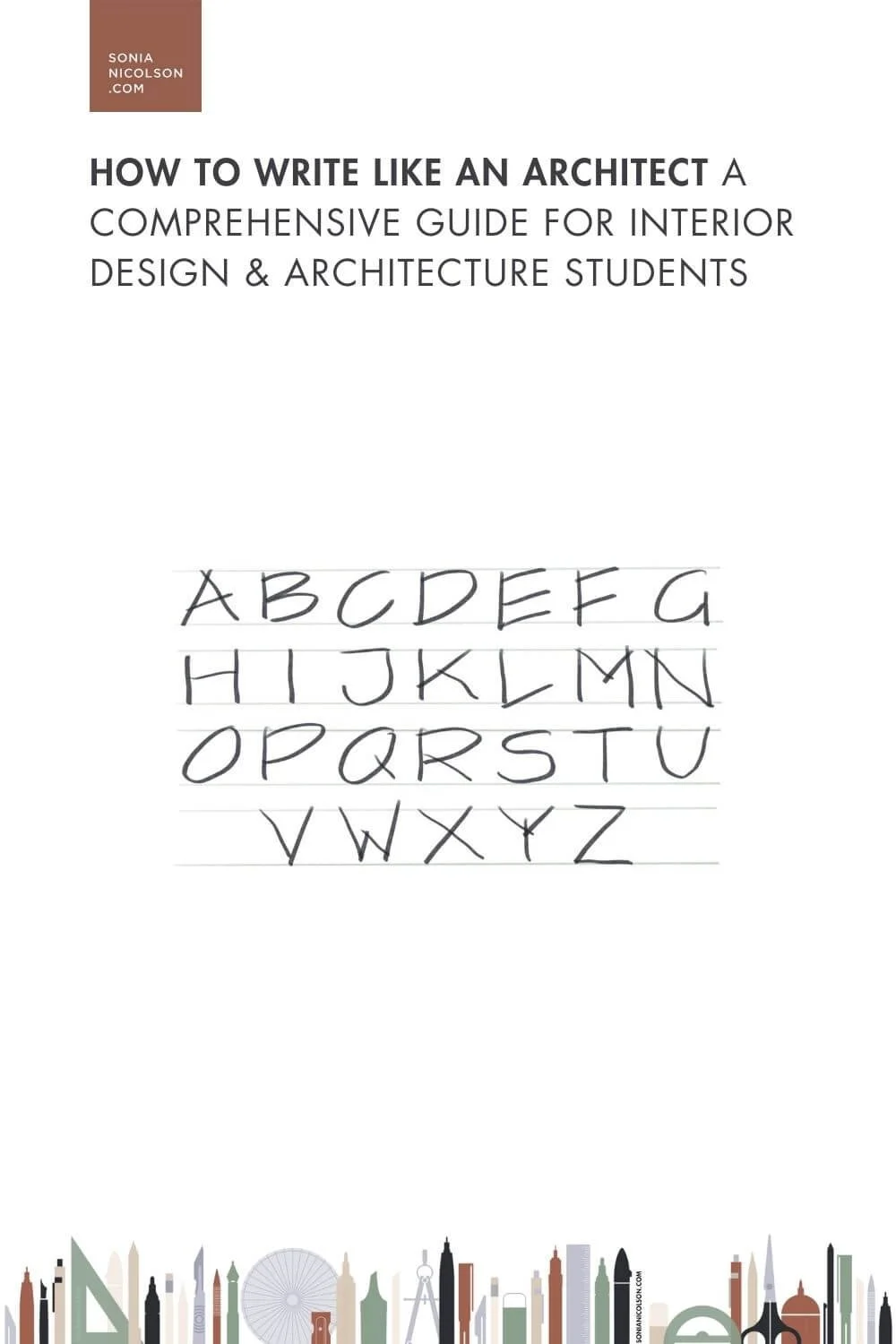How to Write Like an Architect: A Guide for Interior Design and Architecture Students
/How to Write Like an Architect
A Guide for Interior Design and Architecture Students
Architects are known to write in a specific way. Their handwriting is neat, capitalised and easy to read. The ability to effectively communicate both verbally and visually in interior design and architecture will get you far.
Why learn architectural handwriting:
Mastering the skill of writing like an architect not only enhances professionalism but also serves as a tool for precise communication and creative expression.
Learning how to write like an architect requires patience, confidence in your style, and attention to detail to keep it clean and legible. By following these steps and committing to regular practice, you can elevate your handwritten communication and, with practice, in a matter of weeks you’ll be writing like an architect.
Download our Free PDF workbook to help you learn how to write like an architect.
How to Write Like an Architect:
1. Understand Architectural Lettering: Learn the fundamentals of architectural lettering styles (see examples on our Pinterest board)
2. Develop Consistency: Practice drawing letters using the grid in our free PDF workbook so you achieve a consistent height, width, and angles creating unity and style in your architectural lettering.
3. Master Technical Drawing Techniques: At first, you might want to try with rulers so grab your drafting tools and line up your T-squares and triangles for precision. Experiment with different line weights (thickness) to convey hierarchy and importance. The more you practice, the easier it will become and the more you will develop confidence and your writing style.
4. Embrace Minimalism and Simplicity: Simplify complex letters and shapes for clarity. Think of these letters more like drawings. Architects use vertical, horizontal and curved lines to form their layouts, buildings and projects and they use the same to form their letters. Famously Mies van der Rohe said “Less is more” and this applies to architectural handwriting - focus on clean lines and neat forms and your letters will be legible.
5. Explore Architectural Symbols: Incorporate architectural symbols and abbreviations into your handwriting. Architects use a lot of arrows, dashed lines and so on in their work so try out some labels with arrows and text, a north point and so on. Understand the meaning and context behind commonly used symbols in architectural drafting. Depending on the office you work in and the country, you will likely have a standard to refer to. Check with drawings from recent projects and CAD blocks to see which symbols to use for lighting, electrical, drainage, etc and draw them out as part of your new handwritten architectural language.
6. Practice, Practice, Practice: Dedicate time to regular practice (we recommend 20-30 mins a week until it feels natural to you) to refine your new architectural handwriting skills. Experiment with different pens, and you will soon find out what you prefer to write with. Use a grid drawn up in pencils or overlay tracing paper over an inked grid to help align letters and keep everything straight.
Download our free PDF workbook on How To Write Like An Architect.



